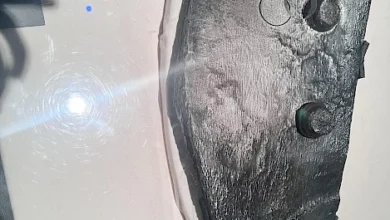The Bizarre Case of the Extremely Haunted Athens Lunatic Asylum

In 1868, construction began on a new mental asylum in Athens, Ohio, in order to provide urgently needed mental health care to the area at a time when such facilities were facing massive overcrowding around the nation. The hospital was meant to operate under a new groundbreaking plan proposed by the American physician Dr. Thomas Story Kirkbride, who wanted to reform mental health care and make it more humane and pleasant for patients in an era when mistreatment of mental patients was rampant. Called the “Kirkbride Method,” it was based on Kirkbride’s influential treatise on hospital design called On the Construction, Organization and General Arrangements of Hospitals for the Insane, and the guidelines included ways to provide adequate recreation and outdoors activities, stated the maximum number of patients that could be housed at any one time, and gave various rules for floor layouts and the construction of facilities, among others. When the rather ominously named “Athens Lunatic Asylum,” later the not much better “The Athens Hospital for the Insane,” opened in 1874, it had the best intentions, seeking to provide quality, humane care to those who needed it, but this would not be the way it would go, and the road to hell is paved with good intentions.
One of the first problems to face the asylum is one that faced many such institutions in those days. It was an era where mental health was still poorly understood, with few agreed upon guidelines on what was to be considered “insane” and even fewer on how to actually treat these people. This was an age when mental health care was still pretty crude and in its infancy, in which many cases of mental illness were thought to be demonic possession, indeed the first patient at Athens was a 14-year old epileptic said to be possessed, and so admissions really ran the range. Patients admitted to Athens were a hodgepodge of various people with all manner of conditions, including Civil War veterans with Post Traumatic Stress Disorder, violent criminals, ranting homeless people, tuberculosis patients, and many others, encompassing people of all ages from children to the elderly. Many of these people suffered from things that would hardly be considered mental illness today, such as alcoholics, rebellious teenagers, women with menopause or other “menstrual derangements,” epileptics, or even people with asthma or those who just engaged in overzealous or chronic masturbation. All of these patients were more or less thrown in there together, with children with simple behavioral problems or lonely elderly people living side by side with stark raving mad violent criminals, with them only being separated by sex into men and women’s wings, so it was flirting with disaster from the start.
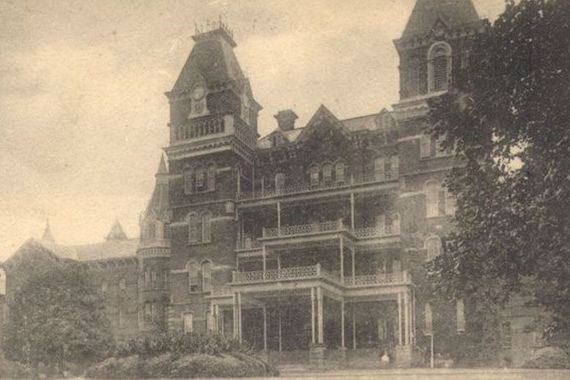
Another problem was that, although they sought to provide quality care and promote a happy life for the patients, the Athens Lunatic Asylum was still married to the primitive mental health treatments of the era, many of which have since been debunked and which sound more like medieval torture methods than anything else. There were lobotomies, electroshock therapy, and hydrotherapy, in which the patient would be bathed in extremely cold or extremely hot water, and liberal use of psychotropic drugs and even hard drugs such as heroin. These were all methods that are now discredited and seen as extremely inhumane, which were of questionable effectiveness at best, and usually just made things worse. Add to this the fact that the rapidly expanding hospital quickly became over crowded, the population blooming to far larger than Kirkbride had advocated, with a patient population of over 2,000 at its peak, who were all poorly attended to by an inadequate staff and poorly trained doctors and who lived in cramped, filthy living conditions. Put all of this together and it was soon clear that, despite the good intentions the Athens Insane Asylum had envisioned when it started, it was pretty much just as bad as any other insane asylum back in an era where to be sent to one was tantamount to a harsh prison sentence and perhaps even a death sentence.
Throughout its years of operation, the Athens Lunatic Asylum had plenty of horror stories coming from within its walls, with much gossip on malpractice, brutality, suicide and murder happening there, gaining it quite the sinister reputation indeed. Of course the place also saw its fair share of death, with over 2,000 patients buried in the asylum’s three cemeteries over the years, many whose graves are marked with just a number, others with locations that have been lost to time or with unidentified bodies, and almost all of these were people who died alone and forgotten. The Athens Lunatic Asylum would close its doors in 1993 after many years of decline in the face of new and improved treatment of the mentally ill, sit abandoned for several years, and finally the complex and its surroundings renovated and renamed to The Ridges. Considering its turbulent past of pain and suffering and all of the death surrounding it, it is perhaps no surprise at all that the Athens Insane Asylum is said to be extremely haunted.
One of the well more hauntings here has its beginning back in 1978, with a deaf and mute 53-year-old female patient by the name of Margaret Shilling. Known as a friendly woman who liked to smile and wave at passing patients and staff, she seemed to be mostly content with her life there, often seen out wandering the grounds and waving from her favorite spots. On December 1, 1978, staff noticed that Margaret was not in her room and was not in any of her usual spots, which was seen as very odd for her. When dinner came around and Margaret still did not show up, they realized that they had a missing patient on their hands and police were notified. The entire asylum was meticulously searched from top to bottom, as well as thousands of acres of the surrounding countryside, but there could be found no trace of the missing woman.
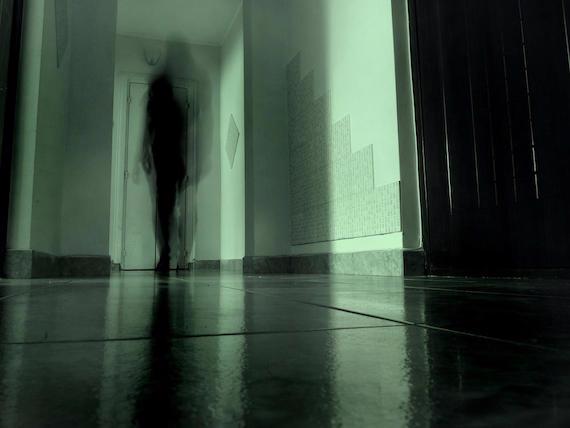
Police would continue the search for 6 weeks before being forced to call it off due to extremely frigid winter conditions. On January 12, 1979, a maintenance worker was doing a routine check and stumbled across a little used room from which there exuded a horrific stench. When the room was checked, police found Margaret’s dead and decomposing body within, and it was considered to be very odd, because that room had been checked several times during the search to be found to be empty every time. Also rather strange was that she was found naked, with all of her clothes neatly folded and placed next to her. The official cause of death would be given as heart failure due to the cold, but then why had she taken her clothes off and why hadn’t her body been there when the room had been reached before? At the time there were those who suspected that she had been the victim of foul play, but there was never any solid evidence of this. Whether this was murder or an accident, the case was even more bizarre in that the removal of the body left behind a stain in a clear imprint of her body that could not be removed no matter what anyone did. Theories for why this should be ranged from that cleaning chemicals had interacted with her decomposition to that Schilling’s body had fat had turned to soap during her decomposing phase, in a process called saponification, but it remained a mystery and the stain never would go away. Neither would she, it would seem.
Almost immediately after the death of Margaret Schilling there were rumors about her haunting the place. Throughout the rest of the asylum’s operation and beyond there would be countless sightings of her wandering about or staring forlornly out of the window of the room she died in, as well as standing around waving as she once did in life. An even creepier aspect to the story is that the mysterious stain on the floor is actually cursed, and that touching it will drive you insane. One of the eerier stories involving the supposedly cursed stain revolves around a woman named Debbie Southall, took up her friend’s dare and touched the stain. After this, her behavior changed, with her going through bouts of lethargy to episodes of rage at a moment’s notice, and she increasingly alienated herself from friends and stayed locked in her room most of the time. One time she disappeared into her room for several days on end, and when a friend let herself in she would find Debbie dead. Along with her own stain etched into the floor. It is a popular tale, to the point that people even today apparently dare each other to touch it, but it is unclear how true the Debbie Southall tale is or if it is nothing more than a persistent urban legend.
The ghost of Margaret Shilling is by far not the only specter said to roam the former asylum or other buildings that have been built here over the years. Numerous apparitions of dead mental patients have been spotted wandering about, as well as shadow figures, hulking black phantoms, and others. Some of the more haunted places here are located at what is now Ohio University, which was built partially on the old asylum grounds, including the main building, now called Lin Hall, which houses music, geology, biotechnology offices as well as the Kennedy Museum of Art and is supposedly crawling with spooks of all kinds. Many shadow figures supposedly roam the halls and rooms and there is a good amount of paranormal phenomena reported throughout the building, including moving objects, lights going on and off by themselves, apparitions, disembodied footstep or voices, sudden clouds or mists, and others, with perhaps the oddest being the specter of a man in a long black cloak who likes to haunt one of the men’s rooms. The main building’s basement is also said to prowled by a malevolent demonic force that will chase and attack visitors, and chains said to have been used to tie people to the walls will violently shake and rattle.
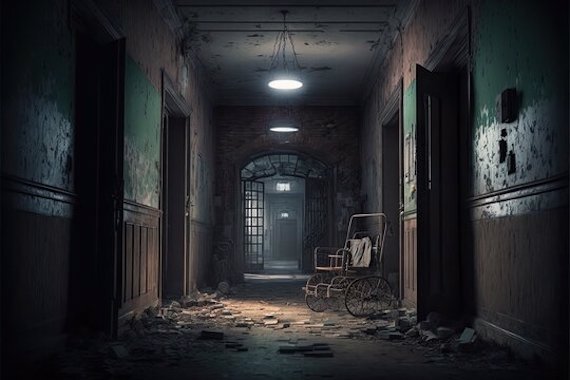
Another incredibly haunted place here is a former part of the asylum that is now part of the university is a dormitory called Wilson Hall, named in the honor of the late faculty member Hiram Roy Wilson. It is actually a rather new building, erected in 1965 on land acquired from the asylum and not nearly as old as much of the campus around it, yet it has nevertheless managed to attract quite the impressive reputation as being incredibly haunted, with all sorts of urban legends congregating around it over the years. One of the most popular is that the hall was built upon a giant pentagram that can be drawn between five surrounding cemeteries on a map, and indeed Wilson Hall supposedly sits right in the middle of it. There are also the typical spooky tales of Satanic worship carried out there in the old days, or that covens of witches would perform dark rituals in the cemeteries, and it has also been found that the hall was actually built over the Athens Insane Asylum. There is also a rumor that there is an ancient Indian burial ground nearby, because why not?
One of the most haunted places within the dormitory is one of its rooms, which lies behind a locked door, with entry barred and the place sealed off, forbidden, because this room just happens to be one of the most evil, haunted locations of an already very haunted place. The story of the room begins in the 1970s, not with a dead asylum patient but with the tragic death of a student. According to the lore, a female student once lived in room 428, but that one day her behavior started to get very odd indeed. She supposedly became very withdrawn and began obsessively studying the occult, becoming so absorbed that it affected her school studies and social life. Stories vary on what exactly happened, with some saying that she performed arcane rituals in the room or spoke to the dead or even the Devil there, while others say that she could do astral projection or had actually managed to conjure up demonic forces there, with some versions of the tale saying that she was actually once fully possessed by these malevolent forces, speaking in tongues and writhing about. While there are a lot of different details, they all agree on one thing, that she died in that room after losing her mind and either cutting her wrists or jumping from the window. It is also agreed that, whatever truth the stories actually hold, Room 428 is most certainly very, very haunted.
After the death, it seems as if practically everyone who lived in the room or even stepped foot there experienced something out of the ordinary, and the list of supposed paranormal phenomena tied to Room 428 is long. Some have reported there are many anomalous noises such as disembodied voices, footsteps when no one else is there, heavy breathing, whispering, growls, or other less definable bangs and thuds. Often the voices heard here were described as being very malicious, telling people to get out or to die. More sinister reports are that demonic faces would appear in reflective surfaces or even within the woodwork only to vanish again, or that blood will sometimes drip from the ceiling or walls. Poltergeist activity is also supposedly very intense here, with objects thrown across the room with great force or unseen hands that will poke and prod, and of course there have been many reports of seeing the apparition of the dead student herself lurking in the shadows. It has also been reported that the room holds an incredibly potent feeling of despair and dread that is almost palpable in its intensity and has caused some people to panic and run from the room in fright.
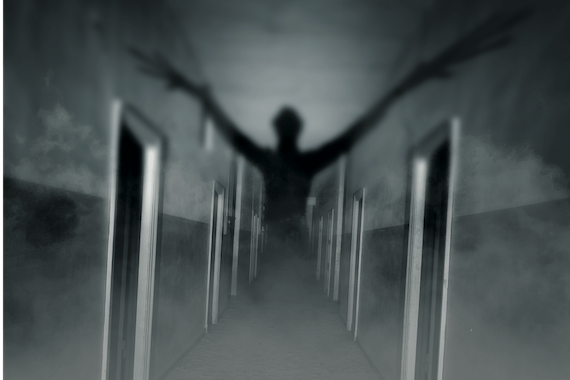
For years these reports came in from residents and visitors, and it got so bad that the university actually ended up closing the room down, not allowing any residents to live there, sealing it shut, and deeming it “uninhabitable.” To this day the room remains closed off and off-limits, whatever is in there contained, but there is plenty of other paranormal activity reported from other areas of Wilson Hall as well, although the residents seem to take it all in stride and even seem to be proud of it. Are the tales real that a girl died here real, and if so was her mind possibly infected by malevolent forces that continue to gravitate towards that room for reasons we may never understand? Or is this just a good dose of spooky urban legend and local lore? It is curious that it was all enough to convince the university to actually seal the room off indefinitely, and whether it is really haunted or not, that door remains locked and its dark secrets sequestered within, whatever those may be.
In addition to the university and the ruins of the still abandoned parts of the asylum are its cemeteries. Here there are numerous reports of strange lights and shadowy apparitions, including one that will apparently lead visitors to a barren patch of ground only to vanish, leading to theories that this is where his grave once was. The cemeteries have also long been said to be used by witches and Satanists to carry out dark rituals and whether any of this is true or not, the decrepit state of the cemeteries is spooky enough that it isn’t too hard to see why such stories are drawn to them. The former Athens Insane Asylum and its surroundings have persistently been listed as among one of the most haunted places in the United States, drawing in all manner of investigators and weird tales. What it is that draws these forces to this place, not only with its dark history, but also with hauntings that come after that. Is there something special here that makes these things gravitate towards it? Is it at some nexus point of the weird that we can’t now comprehend? Or is it all just tall tales and urban legends flitting about an undeniably creepy place? It remains to be seen.

